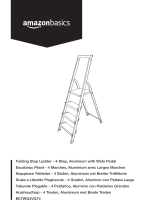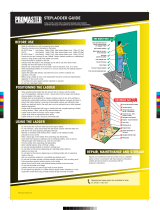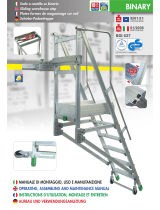HORME WSH Code Of Practice For Ladders Operating instructions
- Type
- Operating instructions
HORME WSH Code Of Practice For Ladders equips you with comprehensive safety guidelines for using ladders in various work environments. It covers topics such as ladder selection, inspection, setup, and proper usage to minimize the risk of accidents and injuries. By following these guidelines, you can ensure a safe and efficient ladder operation in your workplace, promoting a culture of safety and compliance.
HORME WSH Code Of Practice For Ladders equips you with comprehensive safety guidelines for using ladders in various work environments. It covers topics such as ladder selection, inspection, setup, and proper usage to minimize the risk of accidents and injuries. By following these guidelines, you can ensure a safe and efficient ladder operation in your workplace, promoting a culture of safety and compliance.




-
 1
1
-
 2
2
-
 3
3
-
 4
4
HORME WSH Code Of Practice For Ladders Operating instructions
- Type
- Operating instructions
HORME WSH Code Of Practice For Ladders equips you with comprehensive safety guidelines for using ladders in various work environments. It covers topics such as ladder selection, inspection, setup, and proper usage to minimize the risk of accidents and injuries. By following these guidelines, you can ensure a safe and efficient ladder operation in your workplace, promoting a culture of safety and compliance.
Ask a question and I''ll find the answer in the document
Finding information in a document is now easier with AI
Other documents
-
Draper Fibreglass 7 Step Ladder Operating instructions
-
 AmazonBasics B07WQ4VQ74 User manual
AmazonBasics B07WQ4VQ74 User manual
-
Werner 8703220 User manual
-
 Promaster Abru 6 Tread Fibreglass Ladder User manual
Promaster Abru 6 Tread Fibreglass Ladder User manual
-
VonHaus 3500098 User manual
-
Werner 3.8m Soft Close Top Grade Aluminium Telescopic Ladder User manual
-
Boss Teleguard Plus User manual
-
Werner EN131 Pro 2 Section Aluminium Square Rung Extension Ladder Operating instructions
-
Werner 2624349 User manual
-
 FACAL BINARY Operation, Installation, And Maintenance Manual
FACAL BINARY Operation, Installation, And Maintenance Manual






